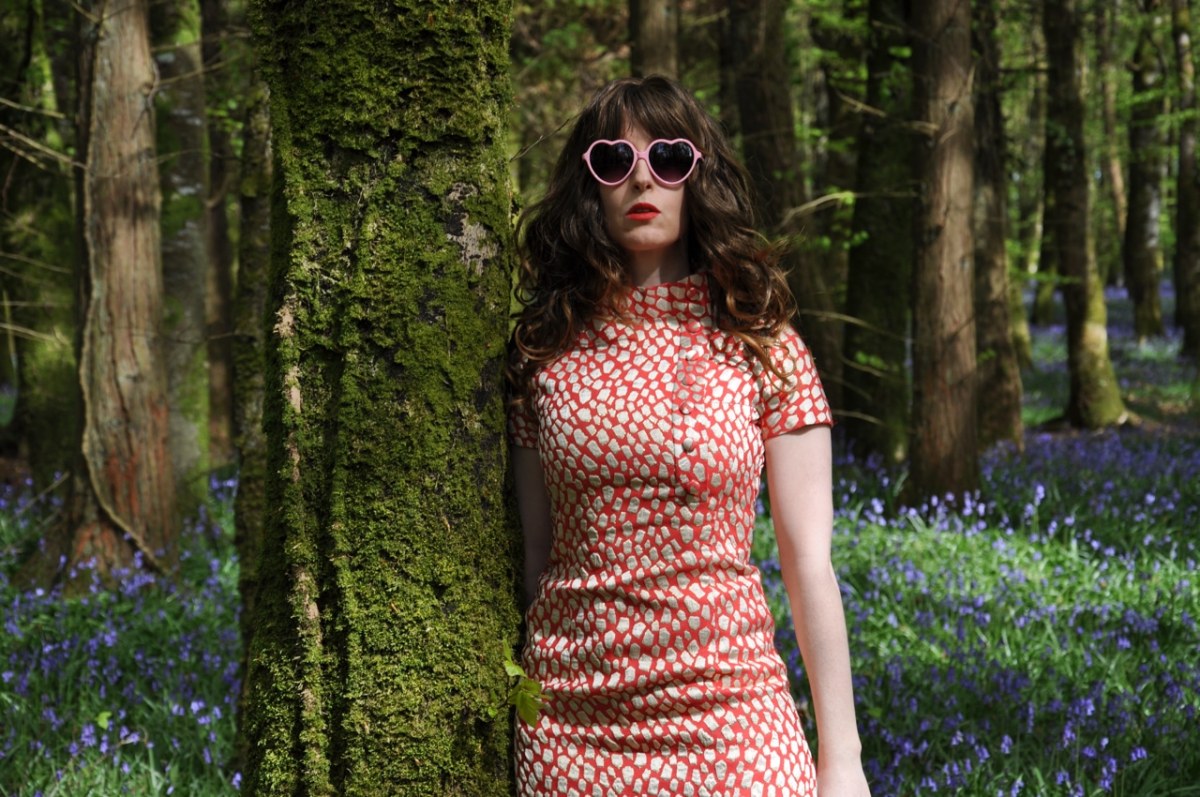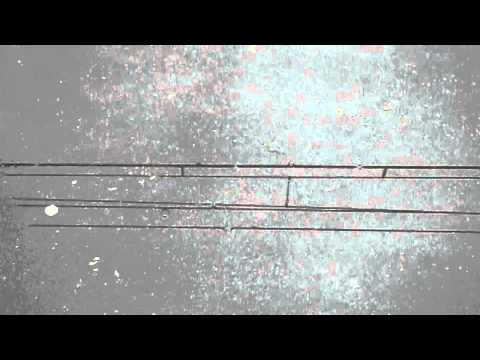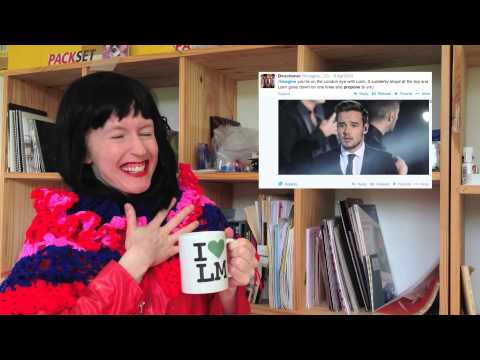A few weeks ago I interviewed Jennifer Walshe via Skype; I was in Berlin, she in her office in London. That week Walshe’s work was to be recognized with an Innovation award from the British Association of Songwriters, Composers and Authors (BASCA), and she was also looking ahead to coming to Berlin in January for performances at the Ultraschall Festival. I asked Walshe about her multimedia focus, her relationship with text and fiction, and the influence of the strange zeitgeist on her artistic goals.
VAN: As an expat, would you say your Irish identity is an important part of your artistic identity?
Jennifer Walshe: Yeah, massively so. Your Irish identity has a certain currency when you live in Glasgow and you’re in a rough part of the city that’s all Rangers fans; it has a very different currency when you’re in Chicago, and then a different one again when you’re in Berlin or New York or London. You get people who think you’re warm and charming. You know, they talk about this trope of the noble savage, the Magical Negro; I think that there must be an Irish one which is the Friendly Paddy—that sort of is the way that Irish people are treated. It can range from racism towards you to a sort of “race-philia,” where people love you because you’re Irish, and you’re thinking: “This has nothing to do with me.” The intersectionality of my gender and my nationality have formed a lot of the way that I think about things.

A lot of your work is hard to pin down, like your recently-finished second book of folksongs. Do you think genre is a thing of the past?
I think genres are fun to play with. The reason I called them “The Folksongs” was because I knew that that would have a specific meaning. I recorded an album last year with Tony Conrad, and most likely the title of the album will be “Songs by Jennifer Walshe and Tony Conrad,” which has a very specific, weird vibe, like a provocation. I don’t think genres will ever fade away, and I think that’s good because I still enjoy calling things operas—I enjoy what that means. I think sometimes we need those things to aspire to or to just sort of frame [our work]. Because with something like “Perfect Lives” by Robert Ashley, for example, if somebody had just said, “It’s a music theatre piece,” it would mean such a different thing than for him to say: “This is an opera; this is what opera can be, what opera can mean.”
Jennifer Walshe, “Minard/nithsdale” for string quartet and two boomboxes; Con Tempo Quartet
Your prose features in the forthcoming Dalkey Archive Anthology of Irish Literature (2017), alongside writing by authors like Samuel Beckett and Flann O’Brien. In your artistic output, do you distinguish between text-based and performance-based work?
For me the sound is always core to everything. The stuff in the Dalkey Archive Anthology is these descriptions of fictional Irish avant-garde musicians [Aisteach: Historical Documents of the Irish Avant Garde (2015)], so the sound is at the core of that. My mother is a writer, and early on I was very encouraged by her; also in the sense that my mom is an extremely strong critic and pulls no punches. When I was a kid, if I wrote things she really gave me rigorous feedback, which has left me with the legacy of often being quite harsh with myself and other people, because that’s what I thought was normal. Anyway, a lot of my first creative endeavors were writing, so for me to go back to writing and to be using text in my pieces a lot now seems very natural. It’s wonderful that [the book’s editor] Rob [Doyle] picked this stuff to go in the Dalkey Archive Anthology: chatting with you and him about your work has made me think about how some of what I’m doing now is closer to writing in a way. I also find myself reading a lot of conceptual poetry, a lot of it and a lot about it.
Text is particularly important to me at the moment because it’s almost like the canary in the coal mine: it’s like an early warning system of how culture is changing. That’s why I read a lot on Twitter, because I want to see what people are doing. I read Weird Twitter, I follow a lot of Black Twitter, things like that.
When I was a kid I used to keep all these notebooks. I had a diary, but then separate to that I had a notebook where I wrote down any text that I thought was interesting. And it’s only now that I’m connecting that thread back. For the last year what I’ve been doing is just like stockpiling text either that I’ve written, misheard, overheard, that I’ve taken from a website, whether it’s a fragment or a whole, and what I’ve started doing is making these big PDF files. Then I get them printed out [she holds up a thick A4 book] and ring bound, very specifically. Because then, when I open them up, I have text. When I am looking for a text—when I’m playing around with ideas—I just open this and flick through it. Or if I go to an improv gig I have these books, and I call them all “BOOK IS BOOK,” and I just have them on a stand. I can flick through them, pull text out, and then improvise. It’s like a DJ with records, you know, looking for the right sound.
So the physical book makes something new emerge from these ephemeral online moments.
What I’ve found, particularly after Trump was elected, [there were] all these little fragments of text, and I was thinking, “Oh, this is going to feel like a real sedimentary layer,” like a carbon layer where there must have been a fire that year. Like, Lena Dunham sent out a newsletter where she was talking about being at the Hillary Clinton—what they thought was going to be the victory party—and about how she got a hive on her chin and she turned and the woman next to her also had a hive. I was like, “This is just… you couldn’t make this shit up!” I was copying and pasting. So that’s the practice now. It is very close to writing in that way, but it all is coming from the sounded word, if that makes sense.
Your pieces “Total Mountain” and “Everything Is Important” (for the Arditti Quartet) are very much multimedia in scope. Yet when I caught “Total Mountain” in Dublin, the experience felt uncommonly immediate. When composing, do you have a particular concept you want to explore in advance, or does that emerge through the process?
It depends on the piece. Certainly with “The Total Mountain” and “Everything is Important,” I was very much interested in writing pieces I felt would have the texture of what it’s like to be alive now. That was very important to me, looking around and using writing the pieces as a practice of being present. I always quote this Tokyo Lecture John Cage gave near the end of his life where he talks about Zen Buddhism. He went to a lecture about Zen Buddhism and they said, “You need to commit to spending time on the cushion, to meditating.” And he knew he couldn’t spend time on the cushion, but he could do it through his music. He knew he didn’t have eight hours a day to meditate but he had eight hours a day to compose, so he would do the practice of Zen through the composition.
With “The Total Mountain” I’m trying to make this texture, I’m trying to look: What does it mean that I have a laptop in front of me? What are all the words on the laptop? How do they work? How is my existence functioning through this? Same with “Everything is Important.” So that then, of course, you get lots and lots of very different textures and things that are more abstract.
I do think that “The Total Mountain” and “Everything is Important” are very overwhelming. There’s a huge amount of information on the video; I’m using text as well; sounds coming from the video and sounds from my voice, and movements live. But I think that that information density is no denser than 40 minutes on the Internet, or on Twitter, or on the Tube, looking around at all the visual information and listening to all the sonic information.
What effect does working with a more traditional new music group like the Arditti Quartet have on your artistic process?
Working with the Ardittis it’s very clear. They approached me and said, “We want you to write, and we want you to be in the piece.” So I knew from the get go, “OK, I’m in the piece and I’m making it.” There is what I would call very tightly structured improvisation in the piece. I would rather have them listen, and do what they do, and then know that it’s going to be around 90 percent the same from gig to gig in certain sections of the piece, than, you know, write out 40 pages of hyper complex music. Because there is an immediacy [in structured improvisation] and I can react to them. I really enjoy that. We’re tighter together as a group as a result: I’m listening to them and pushing them and they’re pushing me back and we’re responding to the acoustics of each space. That’s a little bit closer to the standard composer model. ¶
Subscribers keep VAN running!
VAN is proud to be an independent classical music magazine thanks to our subscribers. For just over 10 cents a day, you can enjoy unlimited access to over 875 articles in our archives—and get new ones delivered straight to your inbox each week.
Not ready to commit to a full year?
You can test-drive VAN for one month for the price of a coffee.




Comments are closed.